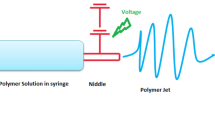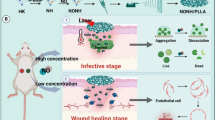Abstract
Mid-infrared free-electron laser (MIR-FEL) is potentially applicable for tissue ablation and dissociation of pathological peptide aggregates in medicine. However, it is still poorly understood how the MIR-FEL irradiation influences on functional proteins such as enzymes. In the current study, the effect of MIR-FEL on both aggregate and non-aggregate (= native) states of hen egg-white lysozyme (HEWL) as a representative enzyme has been investigated. Absorption intensity at terahertz region (0.3–1.2 THz, 10–40 cm−1) of the aggregate of HEWL was lower than that of the native HEWL, but the former was increased nearly to the same level with the latter after the MIR-FEL irradiation tuned to 6 μm that corresponds to carbonyl stretching vibrational mode of amide bonds (amide I). This indicates that the aggregate of HEWL was converted to the native state by the irradiation. On the other hand, synchrotron-radiation vacuum-ultraviolet circular-dichroism spectroscopy showed that protein conformation of the native HEWL, which was rich in α-helix, was little changed after the MIR-FEL irradiation under the same condition with the case of the aggregate of HEWL. Furthermore, the enzymatic hydrolysis activity of the native HEWL against bacterial glycan was not remarkably decreased by the irradiation. Therefore, it can be estimated that the native structure of HEWL is little damaged although the aggregate state can be easily dissociated by the resonant excitation at amide bonds.




Similar content being viewed by others
References
P.G. O’Shea and H.P. Freund, Free-Electron Lasers: Status and Applications, Science 292 (2001), no.5523, 1853–1858.
F. Glotin, R. Chaput, D. Jaroszynski, R. Prazeres, and J. Ortega, Infrared subpicosecond laser pulses with a free-electron laser, Phys Rev Lett. 71 (1993), no.16, 2587–2590.
K. Cohn, J. Blau, W.B. Colson, J. Ng, and M. Price, Free electron Lasers in 2015, Proceedings of FEL 2015 (2015), 625–629.
G. Edwards, R. Logan, M. Copeland, L. Reinisch, J. Davidson, B. Johnson, R. Maciunas, M. Mendenhall, R. Ossoff, J. Tribble, J. Werkhaven, and D. O’Day, Tissue ablation by a free-electron laser tuned to the amide II band, Nature 371 (1994), no.6496, 416–419.
M.A. Mackanos, J.A. Kozub, and E.D. Jansen, The effect of free-electron laser pulse structure on mid-infrared soft-tissue ablation: ablation metrics, Phys. Med. Biol. 50 (2005), no.8, 1871–1883.
G. Frison, G. van der Rest, F. Tureček, T. Besson, J. Lemaire, P. Maître, and J. Chamot-Rooke, Structure of electron-capture dissociation fragments from charge-tagged peptides probed by tunable infrared multiple photon dissociation, J. Am. Chem. Soc. 130 (2008), no.45, 14916–14917.
R.H. Austin, A. Xie, L. van der Meer, B. Redlich, P. Lindgård, H. Frauenfelder, and D. Fu, Picosecond thermometer in the amide I band of myoglobin. Phys. Rev. Lett. 94 (2005),no.12, 128101.
L. Jašíková and J. Roithová, Infrared Multiphoton Dissociation Spectroscopy with Free-Electron Lasers: On the Road from Small Molecules to Biomolecules, Chemistry 24 (2018), no.14, 3374–3390.
M. Matsubara, F. Osada, M. Nakajima, T. Imai, K. Nishimura, T. Oyama, and K. Tsukiyama, Isomerization and dissociation of 2,3-dihydrofuran (2,3-DHF) induced by infrared free electron laser, J. Photochem. Photobiol. A 322 (2016), 53–59.
Y. Xiao, M. Guo, P. Zhang, G. Shanmugam, P.L. Polavarapu, and M.S. Hutson, Wavelength-dependent conformational changes in collagen after mid-infrared laser ablation of cornea, Biophys. J. 94 (2008), no.4, 1359–1366.
T. Kawasaki, T. Yaji, T. Ohta, and K. Tsukiyama, Application of mid-infrared free-electron laser tuned to amide bands for dissociation of aggregate structure of protein, J. Synchrotron Rad. 23 (2016), no.1, 152–157.
T. Kawasaki, T. Yaji, T. Ohta, K. Tsukiyama, and K. Nakamura, Dissociation of β-sheet stacking of amyloid β fibrils by irradiation of intense, short-pulsed mid-infrared laser, Cell. Mol. Neurobiol. 38 (2018), .no.5, 1039–1049.
D.J. Vocadlo, G.J. Davies, R. Laine, and S.G. Withers, Catalysis by hen egg-white lysozyme proceeds via a covalent intermediate, Nature 412 (2001), .no.6849, 835–838.
M.R.H. Krebs, D.K. Wilkins, E.W. Chung, M.C. Pitkeathly, A.K. Chamberlain, J. Zurdo, C.V. Robinson, and C.M. Dobson, Formation and seeding of amyloid fibrils from wild-type hen lysozyme and a peptide fragment from the β-domain, J. Mol. Biol. 300 (2000), no.3, 541–549.
J. Knab, J-Y. Chen, and A. Markelz, Hydration dependence of conformational dielectric relaxation of lysozyme. Biophys. J. 90 (2006), no.7, 2576–2581.
K. Matsuo and K. Gekko, Construction of a synchrotron-radiation vacuum-ultraviolet circular-dichroism spectrophotometer and its application to the structural analysis of biomolecules, Bull. Chem. Soc. Jpn. 86 (2013), no.6, 675–689.
M. Hangyo, M. Tani, and T. Nagashima, Terahertz time-domain spectroscopy of solids: a review, Int. J. Infrared Milli. Waves 26 (2005), no.12, 1661–1690.
K. Gekko and K. Matsuo, Vacuum-ultraviolet circular dichroism analysis of biomolecules, Chirality 18 (2006), no.5, 329–334.
K. Matsuo, Y. Maki, H. Namatame, M. Taniguchi, and K. Gekko, Conformation of membrane-bound proteins revealed by vacuum-ultraviolet circular-dichroism and linear-dichroism spectroscopy, Proteins 84 (2016), no.3, 349–359.
K. Matsuo, K. Sakai, Y. Matsushima, T. Fukuyama, and K. Gekko, Optical cell with a temperature-control unit for a vacuum-ultraviolet circular dichroism spectrophotometer, Anal. Sci. 19 (2003), no.1, 129–132.
D. Thirumalai, G. Reddy, and J.E. Straub, Role of water in protein aggregation and amyloid polymorphism, Acc. Chem. Res. 45 (2012), no.1, 83–92.
J. Xu, K.W. Plaxco, and S.J. Allen, Probing the collective vibrational dynamics of a protein in liquid water by terahertz absorption spectroscopy, Protein Sci. 15 (2006), no.5, 1175–1181.
H. Naiki, K. Higuchi, M. Hosokawa, and T. Takeda, Fluorometric determination of amyloid fibrils in vitro using the fluorescent dye, thioflavin T1, Anal. Biochem. 177 (1989), no.2, 244–249.
D. Morshedi, N. Rezaei-Ghaleh, A. Ebrahim-Habibi, S. Ahmadian, and M. Nemat-Gorgani, Inhibition of amyloid fibrillation of lysozyme by indole derivatives—possible mechanism of action, FEBS J. 274 (2007), no.24, 6415–6425.
Y. Tokunaga, Y. Sakakibara, Y. Kamada, K. Watanabe, and Y. Sugimoto, Analysis of core region from egg white lysozyme forming amyloid fibrils, Int. J. Biol. Sci. 9 (2013), no.2, 219–227.
P. Cecchini, G. Franceschi, E. Frare, A. Fontana, and P. Polverino de Laureto, The role of tryptophan in protein fibrillogenesis: relevance of Trp7 and Trp14 to the amyloidogenic properties of myoglobin, Protein Eng. Des. Sel. 25 (2012), no.4, 199–203.
M.H. Viet, P. Derreumaux, M.S. Li, C. Roland, C. Sagui, and P.H. Nguyen, Picosecond dissociation of amyloid fibrils with infrared laser: a nonequilibrium simulation study, J. Chem. Phys. 143 (2015), no.15, 155101.
M.S. Hutson, S.A. Hauger, and G. Edwards, Thermal diffusion and chemical kinetics in laminar biomaterial due to heating by a free-electron laser, Phys. Rev E. 65 (2002), no.6, 061906.
A.J. Baldwin, T.P. Knowles, G.G. Tartaglia, A.W. Fitzpatrick, G.L. Devlin, S.L. Shammas, C.A. Waudby, M.F. Mossuto, S. Meehan, S.L. Gras, J. Christodoulou, S.J. Anthony-Cahill, P.D. Barker, M. Vendruscolo, and C.M. Dobson, Metastability of native proteins and the phenomenon of amyloid formation, J. Am. Chem. Soc. 133 (2011), no.36, 14160–14163.
W. Wagner, A. Sokolow, R. Pearlstein, and G. Edwards, Thermal Vapor Bubble and Pressure Dynamics during Infrared Laser Ablation of Tissue, Appl. Phys. Lett. 94 (2009), no.1, 013901–1-3.
R. R. Anderson and J. A. Parrish, Selective photothermolysis: precise microsurgery by selective absorption of pulsed radiation, Science 220 (1983), no.4596, 524–527.
C. Pleyer, J. Flesche, and F. Saeed, Lysozyme amyloidosis – a case report and review of the literature, Clin. Nephrol. Case Stud. 3 (2015), 42–45.
M.B. Pepys, P.N. Hawkins, D.R. Booth, D.M. Vigushin, G.A. Tennent, A.K. Soutar, N. Totty, O. Nguyen, C.C.F. Blake, C.J. Terry, T.G. Feest, A.M. Zalin, and J.J. Hsuan, Human lysozyme gene mutations cause hereditary systemic amyloidosis, Nature 362 (1993), no.6420, 553–557.
Acknowledgments
We are grateful to the staff of the IR-FEL Research Center at Tokyo University of Science for providing the beam time. This work was supported in part by the Open Advanced Research Facilities Initiative and Photon Beam Platform Project of the Ministry of Education, Culture, Sports, Science and Technology of Japan, and the collaborative research project of the Research Center for Development of the Far-Infrared Region, University of Fukui, in the fiscal year 2016 (subject number: H28FIRDM029A). VUV-CD spectroscopy was carried out with the approval of the Hiroshima Synchrotron Radiation Center of Hiroshima University (proposal number: 17AU009).
Author information
Authors and Affiliations
Corresponding author
Ethics declarations
Conflict of Interest
The authors declare that they have no conflict of interest.
Additional information
Publisher’s Note
Springer Nature remains neutral with regard to jurisdictional claims in published maps and institutional affiliations.
Electronic supplementary material
Supplementary Material 1
(PDF 242 kb)
Supplementary Material 2
(PDF 582 kb)
Supplementary Material 3
(PDF 31 kb)
Rights and permissions
About this article
Cite this article
Kawasaki, T., Izumi, Y., Ohori, G. et al. Study on Irradiation Effect of Mid-Infrared Free Electron Laser on Hen Egg-White Lysozyme by Using Terahertz-Time Domain Spectroscopy and Synchrotron-Radiation Vacuum-Ultraviolet Circular-Dichroism Spectroscopy. J Infrared Milli Terahz Waves 40, 998–1009 (2019). https://doi.org/10.1007/s10762-019-00626-9
Received:
Accepted:
Published:
Issue Date:
DOI: https://doi.org/10.1007/s10762-019-00626-9




